History
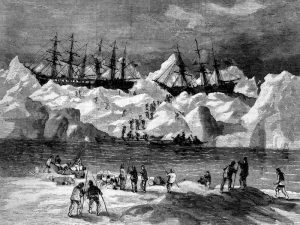 Over the centuries, many ships have been lost at sea, but it isn’t every day that 33 ships are lost together. That was the case in September of 1871, however, when the ice off of the coast of Alaska trapped 33 out of 40 commercial whaling ships who were hunting for bowhead whales in the Artic Ocean. Normally, when ice traps a ship, it eventually releases it’s grip with the shifting winds, but in this case that didn’t happen, and the results were disastrous. Within a few weeks, the ships were destroyed, and the families and crew members had to evacuate and head for one of the ships that was not trapped. As the 1,219 additional people boarded the remaining 7 ships, those ships became overloaded. They had to throw things overboard to allow for the extra weight. Things like their equipment and their precious cargo were lost. The already struggling whaling industry in the United States was basically dealt a final blow. The amazing thing was that no one died, but the loss of 33 ships over those weeks was devastating enough to the whaling industry.
Over the centuries, many ships have been lost at sea, but it isn’t every day that 33 ships are lost together. That was the case in September of 1871, however, when the ice off of the coast of Alaska trapped 33 out of 40 commercial whaling ships who were hunting for bowhead whales in the Artic Ocean. Normally, when ice traps a ship, it eventually releases it’s grip with the shifting winds, but in this case that didn’t happen, and the results were disastrous. Within a few weeks, the ships were destroyed, and the families and crew members had to evacuate and head for one of the ships that was not trapped. As the 1,219 additional people boarded the remaining 7 ships, those ships became overloaded. They had to throw things overboard to allow for the extra weight. Things like their equipment and their precious cargo were lost. The already struggling whaling industry in the United States was basically dealt a final blow. The amazing thing was that no one died, but the loss of 33 ships over those weeks was devastating enough to the whaling industry.
Not much was found of the ships for many years, although debris washed up on shore periodically. Still, no artifacts specifically tied to the shipwrecks could be found beneath beneath the water. In 2015, thanks to technological advances, archaeologists have found the wreckage of what appears to be two of the lost ships. They are located at the bottom of the Chukchi Sea off the coast of Wainwright, Alaska, but an exact location is not being given. Brad Barr, an archaeologist with the National Oceanic and Atmospheric Administration (NOAA), estimated the losses caused by what has been dubbed the Great Whaling Disaster of 1871 would have reached the equivalent of a little more than $33 million today. As Barr told LiveScience: “The event has been attributed as possibly a major contributory factor in the demise of whaling in the U.S.”
Barr began his hunt in late August 2015. He and a team of researchers from the Maritime Heritage Program of the NOAA’s Office of National Marine Sanctuaries surveyed the floor of the Chukchi Sea off the coast of the Inupiat village of Wainwright, in northwestern Alaska. They used state of the art sonar and underwater sensing technologies. They found the magnetic signatures of two shipwrecks they believe are part of the lost 1871 fleet, including the outlines of their flattened hulls. Underwater video revealed anchors, fasteners, pins, and ballast. They even discovered some of the special brick lined pots that the whalers used to heat the whale blubber to turn it into whale oil that was used to fire up oil lamps and make soap, margarine, and other products before the advent of petroleum. While the scientists can’t say definitively that the two wrecked ships were among the 33 lost in 1871, there are a lot of signs that point to it. More than half of all the ships known to have wrecked in the area went down in the 1871 event, and both wrecks, their beams and hull timbers were similar to those used in whaling ships from the late 19th century. The team was also aided in their efforts by changing sea ice levels, increasing opportunities to uncover lost shipwrecks even off Alaska’s northern coast. During the  expedition to the Chukchi Sea, the absence of ice was notable, and the archaeologists reportedly found artifacts from the wrecked ships “just sitting there” for them to find, Barr’s said. The team discovered remnants of a sandbar, which they believe protected the artifacts from sea ice. The NOAA is not really worried that the historic site will be disturbed, because historic preservation laws still apply. Also, there is no gold bullion, jewels or other precious cargo that might draw fortune hunters. Nevertheless, they are not publicizing the site’s exact location. Instead, they will provide all information to the Alaska Office of History and Archaeology, the agency in charge of protecting sites and relics in Alaska.
expedition to the Chukchi Sea, the absence of ice was notable, and the archaeologists reportedly found artifacts from the wrecked ships “just sitting there” for them to find, Barr’s said. The team discovered remnants of a sandbar, which they believe protected the artifacts from sea ice. The NOAA is not really worried that the historic site will be disturbed, because historic preservation laws still apply. Also, there is no gold bullion, jewels or other precious cargo that might draw fortune hunters. Nevertheless, they are not publicizing the site’s exact location. Instead, they will provide all information to the Alaska Office of History and Archaeology, the agency in charge of protecting sites and relics in Alaska.
 As a young boy of just 15 years, Andy Schulenberg was hunting with a friend, Howard Stewart on an October day in 1921. He leaned his rifle against a tree and it fell over, discharging and hitting Andy in the leg. That event would begin a 2 year long stay in the hospital, and Andy would lose his leg about a year into that stay, in June of 1922. While devastated over this event, Andy dug deep inside himself and decided that he would not be an invalid. Fitted with a wooden leg, that had a simple table like rubberized end to it, Andy proceeded to live the rest of his life. This would not break him, because he was not a quitter. Andy did whatever he wanted to do. Throughout his life, Andy did things his way. He became quite competitive. For a time, his family hauled beets, and Andy could out load anyone when it came to loading the truck. His arms were so strong, by way of compensation for his lack of a leg, and the fact that Andy was a big strong man. Many times while loading those trucks, he could load the truck he was working, faster than two men on the other truck…and then he went over and finished loading their truck too. Nobody could beat Andy Schulenberg!
As a young boy of just 15 years, Andy Schulenberg was hunting with a friend, Howard Stewart on an October day in 1921. He leaned his rifle against a tree and it fell over, discharging and hitting Andy in the leg. That event would begin a 2 year long stay in the hospital, and Andy would lose his leg about a year into that stay, in June of 1922. While devastated over this event, Andy dug deep inside himself and decided that he would not be an invalid. Fitted with a wooden leg, that had a simple table like rubberized end to it, Andy proceeded to live the rest of his life. This would not break him, because he was not a quitter. Andy did whatever he wanted to do. Throughout his life, Andy did things his way. He became quite competitive. For a time, his family hauled beets, and Andy could out load anyone when it came to loading the truck. His arms were so strong, by way of compensation for his lack of a leg, and the fact that Andy was a big strong man. Many times while loading those trucks, he could load the truck he was working, faster than two men on the other truck…and then he went over and finished loading their truck too. Nobody could beat Andy Schulenberg!
In 1955 Andy Schulenberg became the sheriff of Rosebud County, Montana. That was really an amazing feat for a man with a wooden peg for a leg. Andy became a sheriff who didn’t carry a gun. That is such an odd thing to think about. There might be a television show sheriff who didn’t need a gun, but the reality is that a real life sheriff carries a gun…at least any I knew of until Andy Schulenberg. You do have to recall that Andy maybe didn’t just love guns…making his decision to become a lawman a strange one, I suppose. I’m sure that most people must think that Andy lived in an area much like Mayberry on the Andy Griffith Show, but they would be wrong. Andy used different tools in his work as sheriff. He knew a lot of the Indian elders in the area, and they respected him. If Andy was looking for a specific brave, he would go to the elders and ask where he was. They would simply bring the young man to him. There are a number of young men who would be glad to tell you that had it not been for Andy Schulenberg, they would probably have ended up in prison. As I said, Andy was a different kind of sheriff. He believed in second chances, and he earned not only the respect of the elders, but of the young braves, and in fact all the young men and women in the area. He was honest and fair, and they knew they would get a fair shake from him.
There were some comical arrests, however. One in particular was the time Andy was called to Ashland, Montana. Two young Cheyenne Indians had decided to break into a liquor store. They made off with about a case of whiskey. They were down on the brush lined banks of Otter Creek when Andy caught up with them. On the reservation, Andy was known as Cottonwood, because of his wooden leg. When he found the young braves, 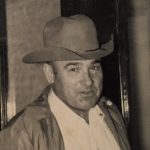 they were a little tipsy from the whiskey. They had crossed a log bridge to get to an island to have a little party. Andy cuffed the boys and told them to wait by the car. He went back for the evidence. On his way back, with several bottles of whiskey, Andy slipped and fell into the water. Under normal circumstances that might not have been a big deal, but wood floats, and Andy’s leg was made of wood. As he struggled to get his leg back under him without losing the evidence, the Indian braves sat on the side of the creek bank laughing hysterically. They assumed that the evidence would be lost, and they would get off scot-free, but they were wrong. Andy managed to get his leg under him, and save one bottle of whiskey. Then he took the braves…who had not even considered running, by the way, back to jail. And he did it all without a gun.
they were a little tipsy from the whiskey. They had crossed a log bridge to get to an island to have a little party. Andy cuffed the boys and told them to wait by the car. He went back for the evidence. On his way back, with several bottles of whiskey, Andy slipped and fell into the water. Under normal circumstances that might not have been a big deal, but wood floats, and Andy’s leg was made of wood. As he struggled to get his leg back under him without losing the evidence, the Indian braves sat on the side of the creek bank laughing hysterically. They assumed that the evidence would be lost, and they would get off scot-free, but they were wrong. Andy managed to get his leg under him, and save one bottle of whiskey. Then he took the braves…who had not even considered running, by the way, back to jail. And he did it all without a gun.

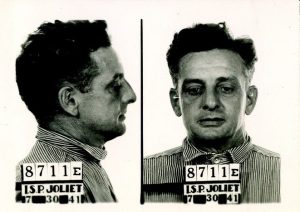 Many things that used to be illegal, are legal today…things like inter-racial marriage, marijuana (now legal in some states), and booze…believe it or not. Booze went from being legal, to being illegal in 1920, and back to legal in 1933. During those years while it was illegal, as with any law, there were those who broke the law and did it anyway. With booze, the problem, like with marijuana…because it was illegal, was no legal source for it. Enter the Bootlegger. Bootleggers, made their own booze and sold it on the black market of the day. The booze, often called Moonshine, was probably stronger than what booze would have been if it had been regulated and made legally, but an illegal product, is made to different standards, and often contains a much higher concentration than if it were legal.
Many things that used to be illegal, are legal today…things like inter-racial marriage, marijuana (now legal in some states), and booze…believe it or not. Booze went from being legal, to being illegal in 1920, and back to legal in 1933. During those years while it was illegal, as with any law, there were those who broke the law and did it anyway. With booze, the problem, like with marijuana…because it was illegal, was no legal source for it. Enter the Bootlegger. Bootleggers, made their own booze and sold it on the black market of the day. The booze, often called Moonshine, was probably stronger than what booze would have been if it had been regulated and made legally, but an illegal product, is made to different standards, and often contains a much higher concentration than if it were legal.
There have been a number of shows and movies that have almost romanticized bootlegging, but in reality, it was a highly dangerous occupation…if it could be called that. I’m sure there were a few non-violent 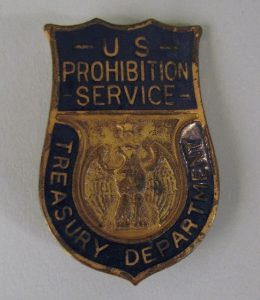 bootleggers…until they had to become violent to protect their stash and their territory. Men like Roger “The Terrible” Touhy, Al Capone, and Roy Olmstead (nicknamed the “King of the Puget Sound Bootleggers”), did everything in their power to bring liquor to those who wanted it…for a price, of course. They had to make a profit and hazard pay was essential too. Early bootleggers smuggled European liquor in, but that quickly became very dangerous, so the bootleggers started to make their own. Every time the prohibition officers caught a bootlegger, the liquor was disposed of…often into the sewer drains. Prohibition officers went everywhere. They were in the cities and the country…anywhere that their intel indicated that a bootlegger had a still in the area. The Temperance Society insisted that they remove every drop of the “demon liquor” from this country. They were convinced that liquor was the root of all evil…so to speak.
bootleggers…until they had to become violent to protect their stash and their territory. Men like Roger “The Terrible” Touhy, Al Capone, and Roy Olmstead (nicknamed the “King of the Puget Sound Bootleggers”), did everything in their power to bring liquor to those who wanted it…for a price, of course. They had to make a profit and hazard pay was essential too. Early bootleggers smuggled European liquor in, but that quickly became very dangerous, so the bootleggers started to make their own. Every time the prohibition officers caught a bootlegger, the liquor was disposed of…often into the sewer drains. Prohibition officers went everywhere. They were in the cities and the country…anywhere that their intel indicated that a bootlegger had a still in the area. The Temperance Society insisted that they remove every drop of the “demon liquor” from this country. They were convinced that liquor was the root of all evil…so to speak.
The bootleggers quickly became Mob leaders with their own gangs, and crossing them quickly became very dangerous. They would even frame or kill their competition, in fact it happened often. Al Capone framed Roger Touhy for kidnapping by his bootlegging rivals with the help of corrupt Chicago officials, was serving a 99-year sentence for a kidnapping he did not commit. He was recaptured a couple of months later. The two men hated each other bitterly, and when it was finally proven that Touhy had been framed, he was released. Three weeks 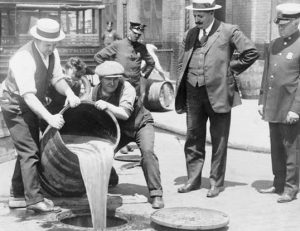
 later as he walked into his sister’s house, Touhy was gunned down. Right before he died, he said, “I’ve been expecting it. The b*******s never forget.” No arrests were made. I wonder if anyone really tried. Those were dangerous times, and one gang often retaliated against another. Even after Prohibition was repealed in 1933, bootleggers did not become extinct, because there were still counties and cities who continued Prohibition. Where there is a law, there are lawbreakers.
later as he walked into his sister’s house, Touhy was gunned down. Right before he died, he said, “I’ve been expecting it. The b*******s never forget.” No arrests were made. I wonder if anyone really tried. Those were dangerous times, and one gang often retaliated against another. Even after Prohibition was repealed in 1933, bootleggers did not become extinct, because there were still counties and cities who continued Prohibition. Where there is a law, there are lawbreakers.
 While people might not know that today, October 14 was the day that Air Force test pilot, Chuck Yeager became the first person to break the sound barrier, many do know that it was Chuck Yeager who accomplished that feat. That was back in 1947, and it was an amazing accomplishment in speed flying…an activity common to test pilots, though not always safe or successful, and sometimes deadly. There was also another record that was broken on this day, but this one was back in 2012.
While people might not know that today, October 14 was the day that Air Force test pilot, Chuck Yeager became the first person to break the sound barrier, many do know that it was Chuck Yeager who accomplished that feat. That was back in 1947, and it was an amazing accomplishment in speed flying…an activity common to test pilots, though not always safe or successful, and sometimes deadly. There was also another record that was broken on this day, but this one was back in 2012.
Felix Baumgartner was born in Salzburg, Austria in 1969, and he started skydiving when he was 16 years old. He was also a paratrooper during his time in the Austrian Army. After his time in the Army, Felix decided that he needed that kind of excitement in his life, and so he went on to perform a series of daredevil feats, including becoming the first person to jump from one of the twin 1,483 foot high Petronas Towers in Kuala Lumpur, then the world’s tallest buildings, in 1999, and becoming the first person to skydive across the English Channel using a carbon-fiber wing, in 2003. His next record breaking jump was going to be his greatest feat, however, and it was five years in the making. It also involved a team of engineers, scientists, and aeronautic experts to custom design his equipment, including his pressurized space suit (intended to prevent his blood from boiling at high altitudes) and 6 foot wide, 2,900 pound, pressurized capsule. I’m sure that by now you are wondering why he would need such equipment, but I  assure you that he did. In 2010 the project, which was financed by energy drink company Red Bull, hit a roadblock when Baumgartner started having panic attacks while undergoing endurance tests in his pressurized suit and helmet. A sports psychologist eventually helped him learn to cope with his claustrophobia. I find it amazing that a dare devil would have such a problem as claustrophobia, but remember that he was a sky diver, so he was used to wide open spaces. This project required that he have a capsule that was attached to a helium balloon to take Baumgartner to an incredible height of 24 miles above the Earth.
assure you that he did. In 2010 the project, which was financed by energy drink company Red Bull, hit a roadblock when Baumgartner started having panic attacks while undergoing endurance tests in his pressurized suit and helmet. A sports psychologist eventually helped him learn to cope with his claustrophobia. I find it amazing that a dare devil would have such a problem as claustrophobia, but remember that he was a sky diver, so he was used to wide open spaces. This project required that he have a capsule that was attached to a helium balloon to take Baumgartner to an incredible height of 24 miles above the Earth.
At this point, I’m sure you are curious about the planned jump. On that morning, October 14, 2012, a 550 foot high helium balloon made of 40 acres of ultrathin plastic lifted the capsule carrying Baumgartner, nicknamed Fearless Felix by the crew at the launch site at Roswell International Air Center. He was going to jump from the capsule  at 127,852.4 feet and plunge to Earth. It would be the highest distance anyone had ever skydived from, and it would take nine minutes and eighteen seconds, of which four minutes and twenty seconds would be free fall…without an opened parachute…during which time he fell 119,431 feet. The prior record for high altitude skydiving was held by Joseph Kittinger, who jumped from an altitude of 102,800 feet in 1960. Kittinger was a former Air Force colonel, and was part of the team that helped prepare Baumgartner for his record breaking jump. Baumgartner’s top speed during that free fall was 843.6 miles per hour, or Mach 1.25, making Fearless Felix not only the record holder for the highest skydive, but now he was also the first person to break the sound barrier without the protection or propulsion of a vehicle. The capsule was equipped with cameras, to record the event, which was broadcast on the internet and on television, so it could be witnessed by millions of people world wide. After the jump, Fearless Felix landed safely in the desert near Roswell, New Mexico.
at 127,852.4 feet and plunge to Earth. It would be the highest distance anyone had ever skydived from, and it would take nine minutes and eighteen seconds, of which four minutes and twenty seconds would be free fall…without an opened parachute…during which time he fell 119,431 feet. The prior record for high altitude skydiving was held by Joseph Kittinger, who jumped from an altitude of 102,800 feet in 1960. Kittinger was a former Air Force colonel, and was part of the team that helped prepare Baumgartner for his record breaking jump. Baumgartner’s top speed during that free fall was 843.6 miles per hour, or Mach 1.25, making Fearless Felix not only the record holder for the highest skydive, but now he was also the first person to break the sound barrier without the protection or propulsion of a vehicle. The capsule was equipped with cameras, to record the event, which was broadcast on the internet and on television, so it could be witnessed by millions of people world wide. After the jump, Fearless Felix landed safely in the desert near Roswell, New Mexico.
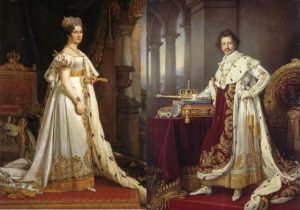 With a strong family history originating in Germany, for both my family and my husband’s family, German history has always been of interest to me. Most people know that Oktoberfest originated in Germany, but I don’t think that very many really know what Oktoberfest is all about. Everyone knows its all about a German party, and that is true, but why would there be a big party from late September to the first Sunday in October every year?
With a strong family history originating in Germany, for both my family and my husband’s family, German history has always been of interest to me. Most people know that Oktoberfest originated in Germany, but I don’t think that very many really know what Oktoberfest is all about. Everyone knows its all about a German party, and that is true, but why would there be a big party from late September to the first Sunday in October every year?
It all started with a wedding. The Bavarian Crown Prince Ludwig I, who would later become King Ludwig I of Bavaria, married Princess Therese von Sachsen-Hildburghausen. Bavaria would later become a state in Germany. The Bavarian royal family decided to make this a big event, and so they invited the citizens 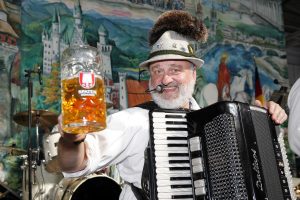 of Munich to attend the festivities. The festivities were held on the fields in front of the city gates, and in honor of the new crown princess, the fields were renamed Theresienwiese, which means Therese’s fields. That being a really long name, the locals have since abbreviated it to the Wies’n. The celebration was quite grand, and concluded with horse races in the presence of the royal family. The people were so happy with this chosen couple, that the event was one filled with joy and happiness. The wedding was celebrated in varying forms across all of Bavaria. Apparently the festivities were so much fun, that the royal family decided that it needed to be an annual event, including the horse races.
of Munich to attend the festivities. The festivities were held on the fields in front of the city gates, and in honor of the new crown princess, the fields were renamed Theresienwiese, which means Therese’s fields. That being a really long name, the locals have since abbreviated it to the Wies’n. The celebration was quite grand, and concluded with horse races in the presence of the royal family. The people were so happy with this chosen couple, that the event was one filled with joy and happiness. The wedding was celebrated in varying forms across all of Bavaria. Apparently the festivities were so much fun, that the royal family decided that it needed to be an annual event, including the horse races.
The decision to repeat the festivities and the horse races in the subsequent  year gave rise to the tradition of the annual Oktoberfest, which now begins in late September and lasts until the first Sunday in October. Alcohol consumption is an important part of the modern festival, and more than 1 million gallons of beer are consumed annually at Oktoberfest. The royal wedding drew 40,000 people, probably a large amount for the time, but that paled in comparison to the 6.4 million people who celebrated the event in 1997. The horse races were eventually stopped, but held once more in 1811. Many other characteristics of the early Oktoberfest traditions have been retained in Munich to this day. So where did the name come from? Well, it is derived from Theresienwiese…or rather the shortened name, Wies’n which apparently translates…Oktoberfest.
year gave rise to the tradition of the annual Oktoberfest, which now begins in late September and lasts until the first Sunday in October. Alcohol consumption is an important part of the modern festival, and more than 1 million gallons of beer are consumed annually at Oktoberfest. The royal wedding drew 40,000 people, probably a large amount for the time, but that paled in comparison to the 6.4 million people who celebrated the event in 1997. The horse races were eventually stopped, but held once more in 1811. Many other characteristics of the early Oktoberfest traditions have been retained in Munich to this day. So where did the name come from? Well, it is derived from Theresienwiese…or rather the shortened name, Wies’n which apparently translates…Oktoberfest.

 When you think of a town within a town or city, you often think of New York City, where you might find Queens, Harlem, or Yonkers. Or you might think of New Orleans, where you might find the French Quarter or the 9th Ward, but people really never think of a town within a town, when the town is a small town, like Forsyth, Montana, population of about 1,777. Nevertheless, Forsyth, Montana was a town that had within it a town…so to speak. When my husband, Bob Schulenberg’s grandpa, Andrew Schulenberg was a young married man, he built a couple of houses there. The houses were next door to each other. Andy’s parents lived in one house, and he and his wife, lived in the other. Across the street was another house owned by Schulenberg family relative, Bob’s Great Aunt Hennie. Being such a small town, there were other Schulenberg families very nearby, and since Andy’s parents, Max and Julia Schulenberg had ten children, it made for a lot of Schulenberg relation living in a neighborhood in Forsyth, Montana. Well, before long, the people of the town found themselves calling that neighborhood, Schulenbergville. I’m not sure just exactly when
When you think of a town within a town or city, you often think of New York City, where you might find Queens, Harlem, or Yonkers. Or you might think of New Orleans, where you might find the French Quarter or the 9th Ward, but people really never think of a town within a town, when the town is a small town, like Forsyth, Montana, population of about 1,777. Nevertheless, Forsyth, Montana was a town that had within it a town…so to speak. When my husband, Bob Schulenberg’s grandpa, Andrew Schulenberg was a young married man, he built a couple of houses there. The houses were next door to each other. Andy’s parents lived in one house, and he and his wife, lived in the other. Across the street was another house owned by Schulenberg family relative, Bob’s Great Aunt Hennie. Being such a small town, there were other Schulenberg families very nearby, and since Andy’s parents, Max and Julia Schulenberg had ten children, it made for a lot of Schulenberg relation living in a neighborhood in Forsyth, Montana. Well, before long, the people of the town found themselves calling that neighborhood, Schulenbergville. I’m not sure just exactly when 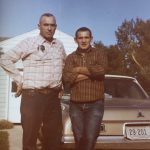 the neighborhood got its name, but since Andy was the sheriff of Rosebud County from 1955 to 1972, my guess is that it was either during that time, or it was his job as sheriff that solidified the name to that area of town.
the neighborhood got its name, but since Andy was the sheriff of Rosebud County from 1955 to 1972, my guess is that it was either during that time, or it was his job as sheriff that solidified the name to that area of town.
I had the chance to see the two houses that Andy Schulenberg built, and to find out that the second one was the house that Bob’s Uncle Butch Schulenberg was born in. I love to see the homes where loved ones were born, partly I suppose, because so few people are born at home these days. In those days, however, being born at home was a very common practice, and it makes me think about the history that the house has witnessed. The house got to see little Butch Schulenberg growing up…or at least starting his life, since I don’t know when the family might have moved out of the house. Nevertheless, the area remained Schulenbergville for a number of years, and I don’t think the locals have forgotten it to this day.
Nor have they forgotten the sheriff who really made the Schulenberg name a household word in the little town of Forsyth. Andy was a different kind of sheriff from those you normally meet, and that is a story I will tell sometime, but it’s too long for this story. Suffice it to say that he was dearly loved, and there is more than one 
 adult who owes the fact that they weren’t in prison…or worse as kids, to Sheriff Andy Schulenberg, and they will be happy to tell you so. The two houses Andy built still stand, as do the houses of the neighboring Schulenberg clan members, although some are no longer occupied. I find that a bit sad, but it is a testament to good construction work. Now they stand as a treasured memory for those who knew Schulenbergville well.
adult who owes the fact that they weren’t in prison…or worse as kids, to Sheriff Andy Schulenberg, and they will be happy to tell you so. The two houses Andy built still stand, as do the houses of the neighboring Schulenberg clan members, although some are no longer occupied. I find that a bit sad, but it is a testament to good construction work. Now they stand as a treasured memory for those who knew Schulenbergville well.

 When you think of Indian arrowheads, you usually think of the Old West or the cowboys and Indians. You think of the battles the Indians had over broken treaties and the influx of settlers into the west. That’s what you think of, but that isn’t what my nephew, Steve Moore thinks of…at least that’s not the only thing he thinks about. For Steve, thoughts of arrowheads bring thoughts of obsidian.
When you think of Indian arrowheads, you usually think of the Old West or the cowboys and Indians. You think of the battles the Indians had over broken treaties and the influx of settlers into the west. That’s what you think of, but that isn’t what my nephew, Steve Moore thinks of…at least that’s not the only thing he thinks about. For Steve, thoughts of arrowheads bring thoughts of obsidian.
You might think that is strange, but Steve has learned the ancient art of flintknap. It all started with his love of wall climbing. He learned to make the hand and foot holds for wall climbing. Then, he started thinking about flintknap. Flintknap is the art of making arrowheads and other weapons from rocks, like obsidian. Steve started 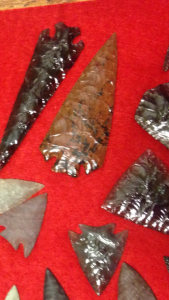 with pieces of broken glass, and later graduated to rocks, and even bone. He and a friend named Scott, made a trip to Oregon and brought back a truck load of obsidian, and Steve taught Scott and another friend, Jay how to flintknap. Steve, made some amazing tools to knap with.
with pieces of broken glass, and later graduated to rocks, and even bone. He and a friend named Scott, made a trip to Oregon and brought back a truck load of obsidian, and Steve taught Scott and another friend, Jay how to flintknap. Steve, made some amazing tools to knap with.
Through the years, Steve got out of the flintknapping hobby for a time…twelve years or so, but has recently picked it up again. Flintknapping is a great hobby to engage in while sitting around the campfire or the fireplace in the evenings. Steve made two arrowheads each weekend these past two weekends. His wife, my niece, Machelle told me that when you are flintknapping, you have to learn how not to bleed. If Steve gets that talent accomplished, I know several people who would like to know the trick to it.
Steve likes obsidian the best, because it creates beautiful shine and color to the arrowheads and other weapons. The rainbow obsidian is one of Steve and Machelle’s favorites because of the beautiful colors it contains. The orange of the pumpkin obsidian is also stunning. When I looked at the pictures that Machelle sent me of Steve’s work, it felt like I was looking at jewels. The arrowheads sparkle and shine, almost like 
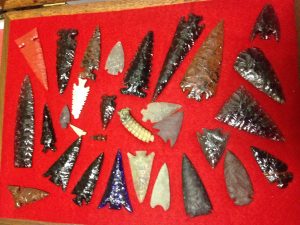 diamonds. I was stunned to find that Steve had such a talent, but then it’s pretty typical of Steve not to blow his own horn. That just isn’t his style, so I guess I’ll just do it for him, because as far as I’m concerned, Steve has an amazing talent. These arrowheads and weapons, while functional if they ever needed ammunition, are so much more than that. They are absolutely beautiful. Today is Steve’s birthday. Happy birthday Steve!! Have a great day!! We love you!!
diamonds. I was stunned to find that Steve had such a talent, but then it’s pretty typical of Steve not to blow his own horn. That just isn’t his style, so I guess I’ll just do it for him, because as far as I’m concerned, Steve has an amazing talent. These arrowheads and weapons, while functional if they ever needed ammunition, are so much more than that. They are absolutely beautiful. Today is Steve’s birthday. Happy birthday Steve!! Have a great day!! We love you!!
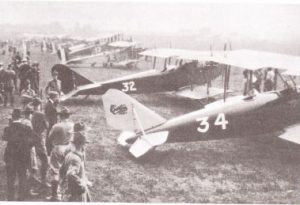 I think most of us have watched car races at some point in our lives, some of us, like my sister Alena Stevens and her husband Mike, have even been to some of the big raceways. Some of us…as teenagers, even participated in drag racing on the public streets, hoping the whole time not to get caught by the police. While these don’t happen every day, they are a normal type of race, but on this day October 8, 1919, a most unusual race was held. It was the first of its kind. The first transcontinental flight took place in 1911, so I suppose that it was only a matter of time before a race had to be held. The first Transcontinental Air Race in the United States took place with 63 airplanes competing in the round trip aerial derby between California and New York.
I think most of us have watched car races at some point in our lives, some of us, like my sister Alena Stevens and her husband Mike, have even been to some of the big raceways. Some of us…as teenagers, even participated in drag racing on the public streets, hoping the whole time not to get caught by the police. While these don’t happen every day, they are a normal type of race, but on this day October 8, 1919, a most unusual race was held. It was the first of its kind. The first transcontinental flight took place in 1911, so I suppose that it was only a matter of time before a race had to be held. The first Transcontinental Air Race in the United States took place with 63 airplanes competing in the round trip aerial derby between California and New York.
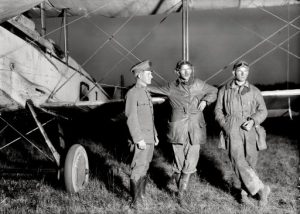
Fifteen planes took off from the Presidio in San Francisco California, and 48 planes left Roosevelt Field on Long Island, New York. The goal was to see who could fly from one location to the other and back with the best time. I know that most of us instinctively look up when we hear an airplane overhead, so just imagine hearing 48 of them flying over at the same time. What an amazing sight that would be. Of course, the planes would eventually spread out some, as the faster ones got ahead of the others. The race was a total of 5,400 miles long, and the winner was Lieutenant Bevin Maynard, who reached Presidio in just over three days rested, serviced his plane and took off again. His actual 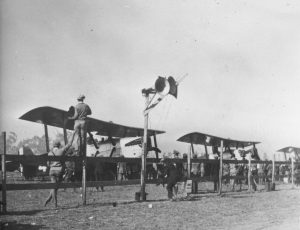 flight time was 24 hours, 59 minutes, and 49 seconds. Maynard won the race by having the lowest elapsed time, even though three other people had faster actual flying times.
flight time was 24 hours, 59 minutes, and 49 seconds. Maynard won the race by having the lowest elapsed time, even though three other people had faster actual flying times.
Since that first race, there have been any others, including a Junior transcontinental air speed record and a Women’s transcontinental air speed record. People just seem to have a natural need for speed, and once a record has been set, someone is always there waiting in the wings to break that record. It seems flight is one of the biggest need for speed and record breaking areas of transportation there is.
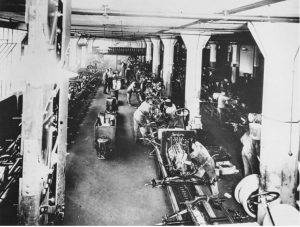 These days, so many things are automated, that we hardly know how to work in an environment that requires us to hand build everything. Machines often make most of the things we buy, but it wasn’t always so. In the beginning of the automobile age, cars had to be put together by hand, making it a very slow process. If you are going to sell mass quantities of something, you have to be able to mass produce it. Selling mass quantities of his now famous, Model T, was exactly what Henry Ford wanted to do. So he came up with a way to move the vehicles from one worker to another. Each worker had a specific part they were to place, before the vehicle moved on down the line. Ford’s dream was to make the automobile available to everyone, not just the rich, who could afford to order the new fangled machines. Of course, most people those days didn’t really think that the automobile would ever amount to much, but as we all know, they were very wrong. The automobile has become an absolute necessity for most people…except maybe some in the bigger cities, where owning a car isn’t really feasible because of parking issues and heavy traffic.
These days, so many things are automated, that we hardly know how to work in an environment that requires us to hand build everything. Machines often make most of the things we buy, but it wasn’t always so. In the beginning of the automobile age, cars had to be put together by hand, making it a very slow process. If you are going to sell mass quantities of something, you have to be able to mass produce it. Selling mass quantities of his now famous, Model T, was exactly what Henry Ford wanted to do. So he came up with a way to move the vehicles from one worker to another. Each worker had a specific part they were to place, before the vehicle moved on down the line. Ford’s dream was to make the automobile available to everyone, not just the rich, who could afford to order the new fangled machines. Of course, most people those days didn’t really think that the automobile would ever amount to much, but as we all know, they were very wrong. The automobile has become an absolute necessity for most people…except maybe some in the bigger cities, where owning a car isn’t really feasible because of parking issues and heavy traffic.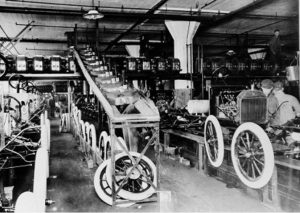
On this day, October 7, 1913, Henry Ford’s entire Highland Park, Michigan automobile factory started running on a continuously moving assembly line where the chassis, which is the automobile’s frame, was assembled using a state of the art, revolutionary industrial technique. A motor and rope pulled the chassis past workers and parts on the factory floor, cutting the man hours required to complete one “Model T” from 12-1/2 hours to six. Within a year, improvements in the assembly line reduced the time required to 93 man minutes…to build a car!! That is just amazing to me. The increase in productivity brought about by Ford’s use of the moving assembly line allowed him to drastically reduce the cost of the Model T. Ford’s goal was to make the car affordable to ordinary consumers. This new process allowed him to realize that goal, and before long, everyone had an automobile.
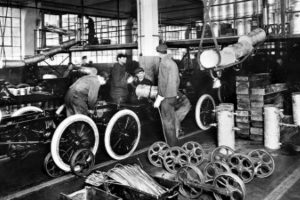
Since the days of Ford’s antiquated assembly line, automation has vastly improved. These days machines can do so much more that their human counterparts. Of course, that has eliminated more than just a few jobs, but as people have learned to run that equipment, new jobs have opened up. In this world, time doesn’t stand still, and progress waits for no man. You have to learn the new skills as they come along so that you can keep up in this fast paced automated world. Assembly lines have come a long way since those old days, and it’s a good thing, because the automobile is now in very high demand around the world, and people won’t wait very long to get one.
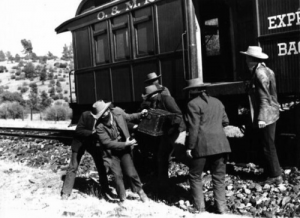 There are people these days who think we should get rid of the police officers, but they are obviously not thinking about the Old West. In the early days of the Old West, there were no law men. People had to take care of themselves. And contrary to what you might think, many people didn’t just carry a gun everywhere then either. That basically left them defenseless in many situations. On this day October 6, 1866, the Reno Gang carried out the first robbery of a moving train in United States history. Prior to that day, trains had been robbed while they were at the stations or in the freight yards, but that was proving to be a little dangerous, as the lawmen that were in the west were mostly in the towns. The Reno Gang changed the way criminals thought about things.
There are people these days who think we should get rid of the police officers, but they are obviously not thinking about the Old West. In the early days of the Old West, there were no law men. People had to take care of themselves. And contrary to what you might think, many people didn’t just carry a gun everywhere then either. That basically left them defenseless in many situations. On this day October 6, 1866, the Reno Gang carried out the first robbery of a moving train in United States history. Prior to that day, trains had been robbed while they were at the stations or in the freight yards, but that was proving to be a little dangerous, as the lawmen that were in the west were mostly in the towns. The Reno Gang changed the way criminals thought about things.
I’m not sure if their plan would have been considered innovative exactly, but as crime goes, I suppose it was. 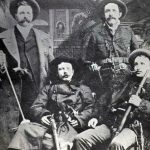 Their idea was that if they robbed the train in some remote area of the track, the crew of the train, and the people on it would be at their mercy, and they could take what they chose to. That first moving train robbery was on an Ohio and Mississippi train in Jackson County, Indiana, and netted the gang a profit of $10,000. It was a piece of cake, because there was no one to save the people on board. While I don’t believe anyone died, they were all very scared.
Their idea was that if they robbed the train in some remote area of the track, the crew of the train, and the people on it would be at their mercy, and they could take what they chose to. That first moving train robbery was on an Ohio and Mississippi train in Jackson County, Indiana, and netted the gang a profit of $10,000. It was a piece of cake, because there was no one to save the people on board. While I don’t believe anyone died, they were all very scared.
The news of this new type of robbery traveled fast, and before long, trains became a moving target. There were gangs, like Butch Cassidy’s Wild Bunch who found train robbery so easy and profitable, that for a time, it became their specialty. The large stashes of cash and precious minerals on the trains and the sparsely populated landscape, gave the gangs just what they needed for success. Nevertheless, like all crime, eventually 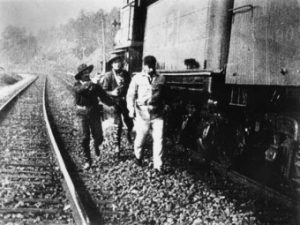 precautions were taken to prevent continued loss. By the late 1800s, robbing trains became increasingly dangerous. Railroad owners started protecting their trains’ valuables with large safes, armed guards, and fortified boxcars.
precautions were taken to prevent continued loss. By the late 1800s, robbing trains became increasingly dangerous. Railroad owners started protecting their trains’ valuables with large safes, armed guards, and fortified boxcars.
The Reno Gang was finally captured in 1868 after a series of robberies. That December saw another type of problem that develops when there is a lack of lawmen…vigilante justice. A mob of the citizens of the town, stormed the jail and hanged the brothers, Frank, Simeon, and William Reno and fellow gang member, Charlie Anderson. Their brother John Reno had been caught earlier and was serving time in a different prison.

